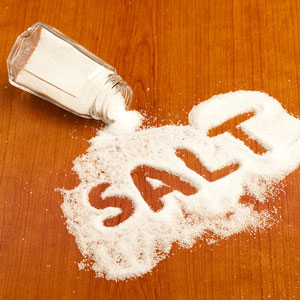Reduced-salt food and drink – significant opportunities for manufacturers
- Like
- Digg
- Del
- Tumblr
- VKontakte
- Buffer
- Love This
- Odnoklassniki
- Meneame
- Blogger
- Amazon
- Yahoo Mail
- Gmail
- AOL
- Newsvine
- HackerNews
- Evernote
- MySpace
- Mail.ru
- Viadeo
- Line
- Comments
- Yummly
- SMS
- Viber
- Telegram
- Subscribe
- Skype
- Facebook Messenger
- Kakao
- LiveJournal
- Yammer
- Edgar
- Fintel
- Mix
- Instapaper
- Copy Link
Posted: 2 June 2011 | Datamonitor | No comments yet
Food and drink with reduced salt formulations will be a massive opportunity for manufacturers globally in the near future…


Consumers’ love affair with processed food, combined with a rising awareness of the damage that high levels of salt can do to health, will make food and drink with reduced salt formulations a massive opportunity for manufacturers globally in the near future, finds Business Insights.


A new report has revealed that more than half of the industry insiders surveyed agree that reduced salt is the most important health initiative, followed by reduced calories and reduced fat.
A new report* by the independent market analyst has revealed that more than half of the industry insiders surveyed agree that reduced salt is the most important health initiative, followed by reduced calories and reduced fat. However, manufacturers have yet to fully exploit this trend. Between 2007 and 2010, only 1.6% of all new products featured a “reduced salt” claim, compared to 5.1% for “reduced sugar” and 7.9% for “reduced fat.”
Michael Randle, senior analyst at Business Insights, states: “The reduced salt market in food and drinks currently holds a great deal of largely untapped potential, as the number of product launches in this category has been relatively low. One of the key drivers behind this opportunity is consumers’ appetite for processed food and drink, both of which are generally recognized as containing too much salt. There is also huge growth predicted across all markets for most categories of processed foods, particularly for frozen ready meals, giving manufacturers a large potential market for reduced salt products.”
However, Business Insights believes that although there are opportunities to tap into consumer demand for reduced salt products, there are also significant hurdles.
Mr Randle continued: “Consumers like the taste of salt; that is why most diets are too high in it. Making sure a reduced-salt food or drink item still appeals to consumers is one of the biggest challenges to manufacturers. In fact, according to Business Insights’ research, more than 40% of those surveyed agreed that the current reduced-salt food and drink products on the market fail to meet consumer expectations in terms of taste. What further complicates the situation is that the role salt plays in processed food and drink goes beyond taste and affects safety and shelf life. If manufacturers are able to overcome these hurdles, then the development of reduced-salt products could prove lucrative.”
*Innovations in Salt Reduction in Food and Drinks




